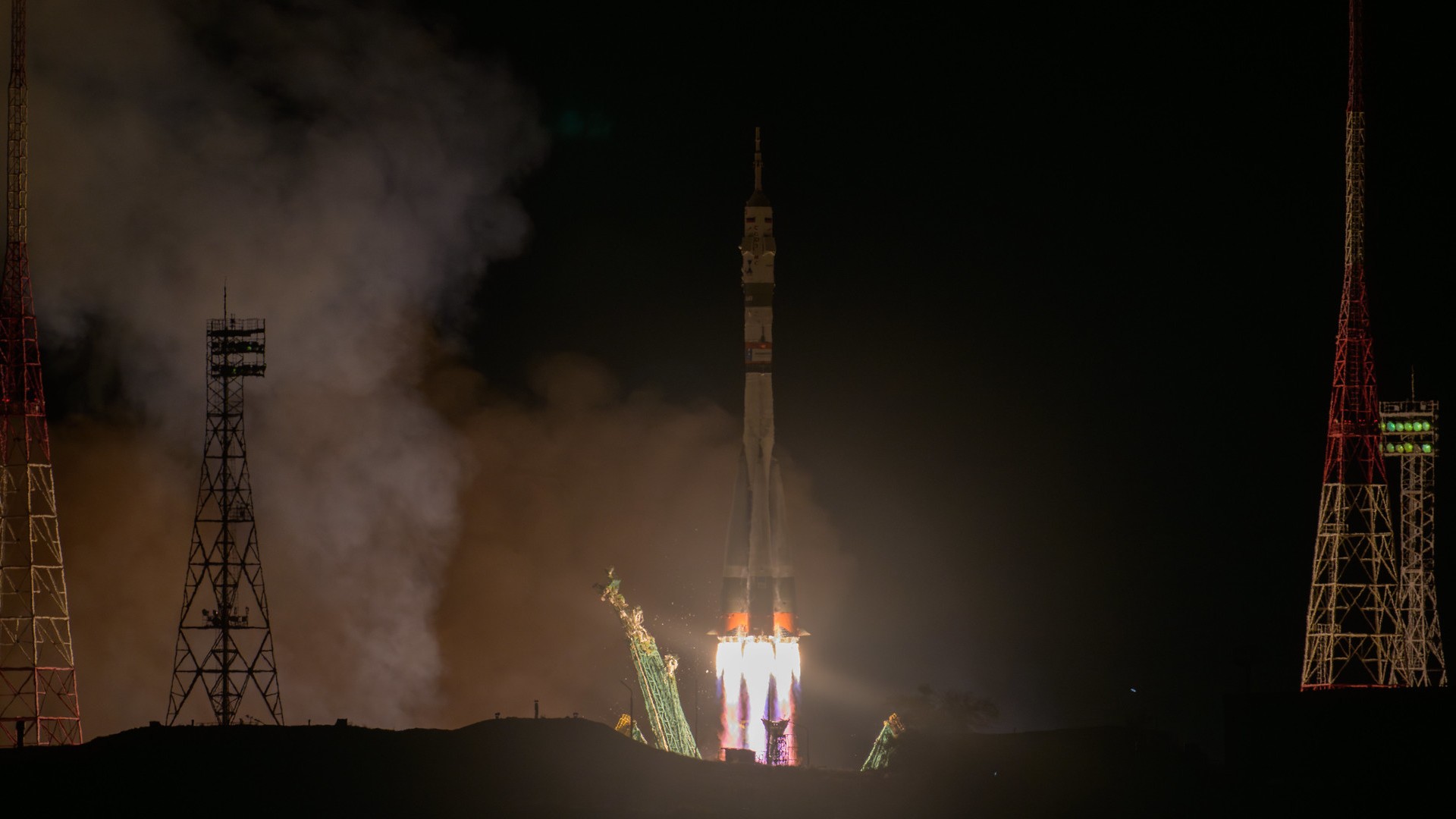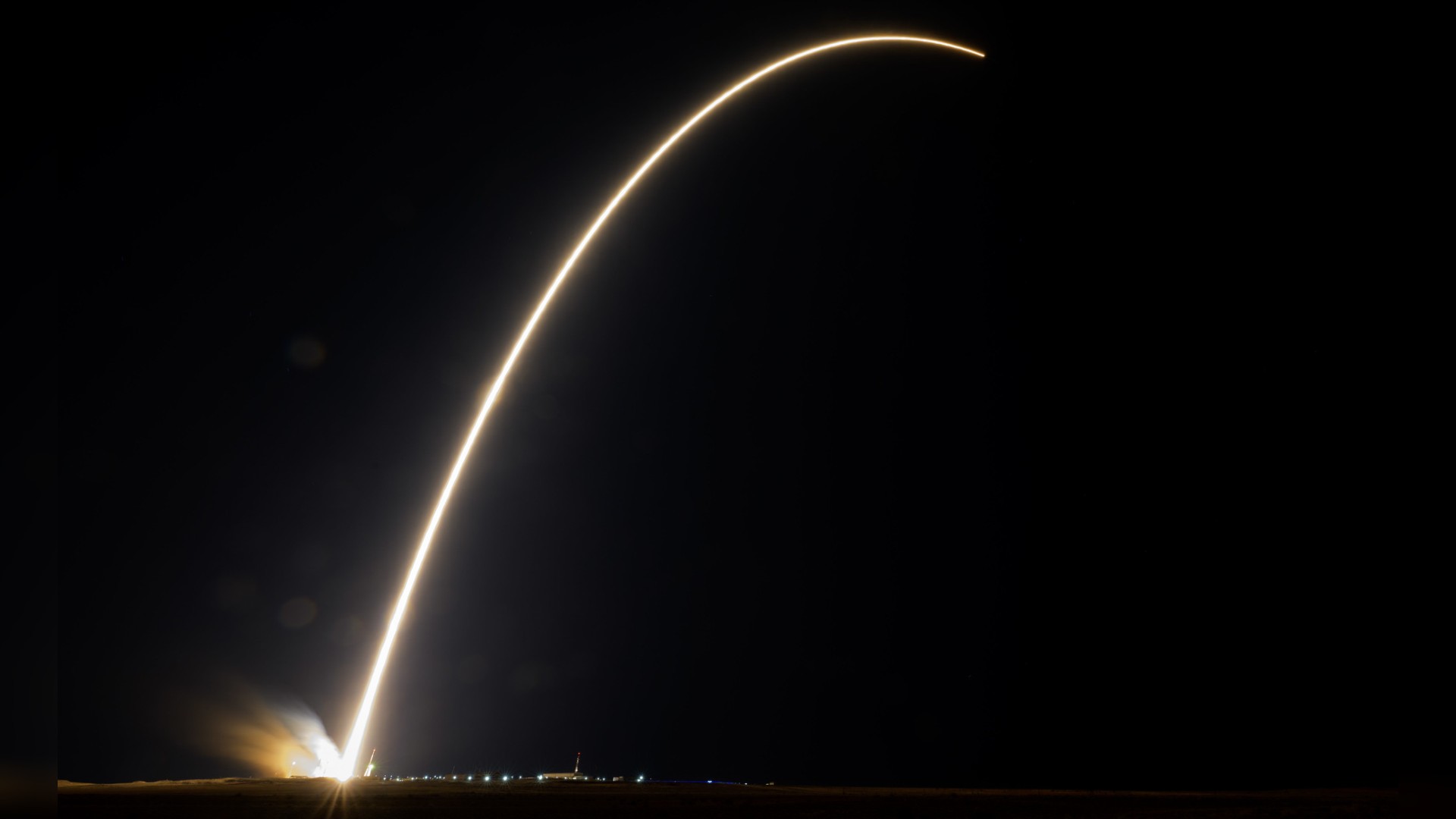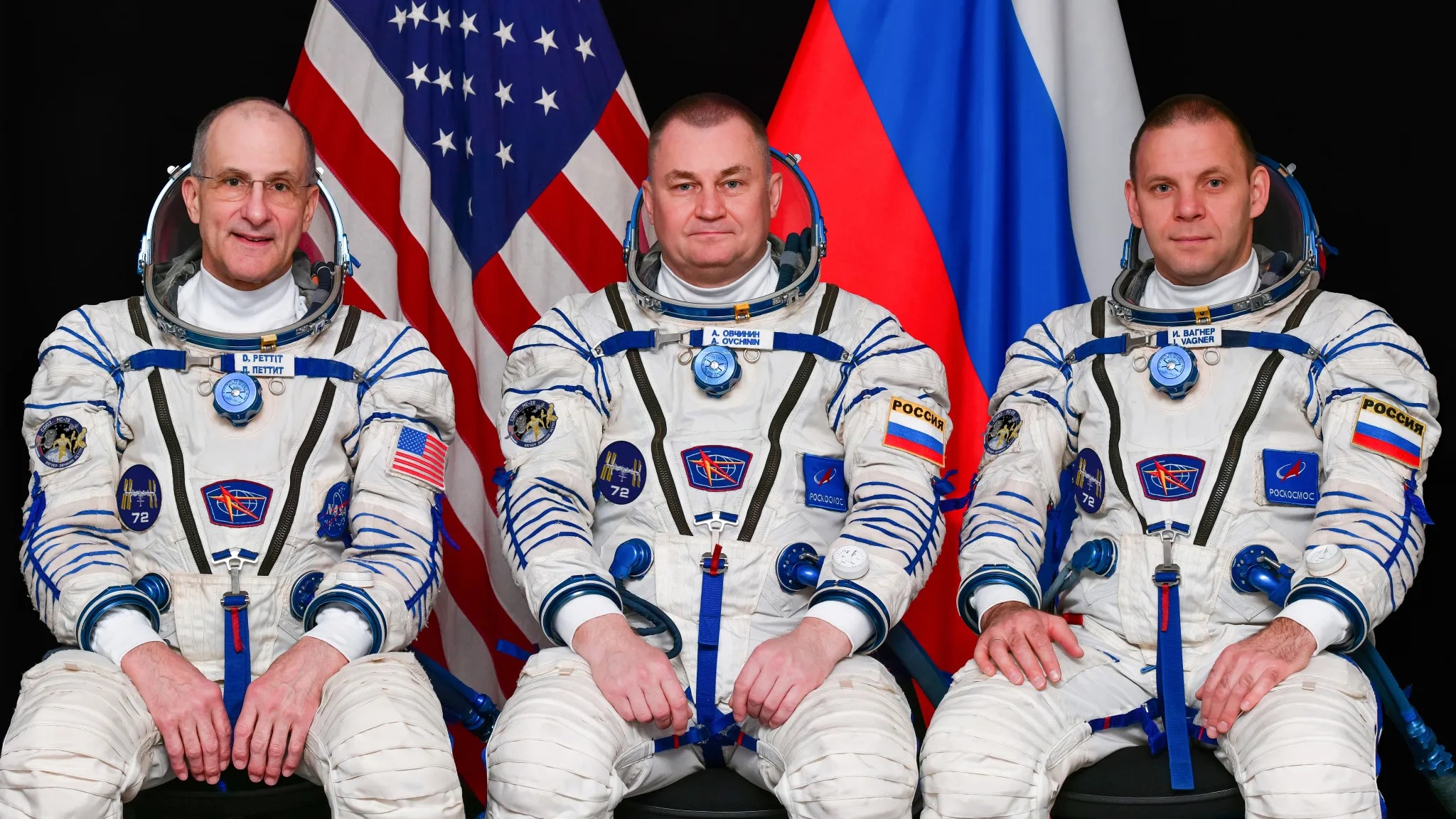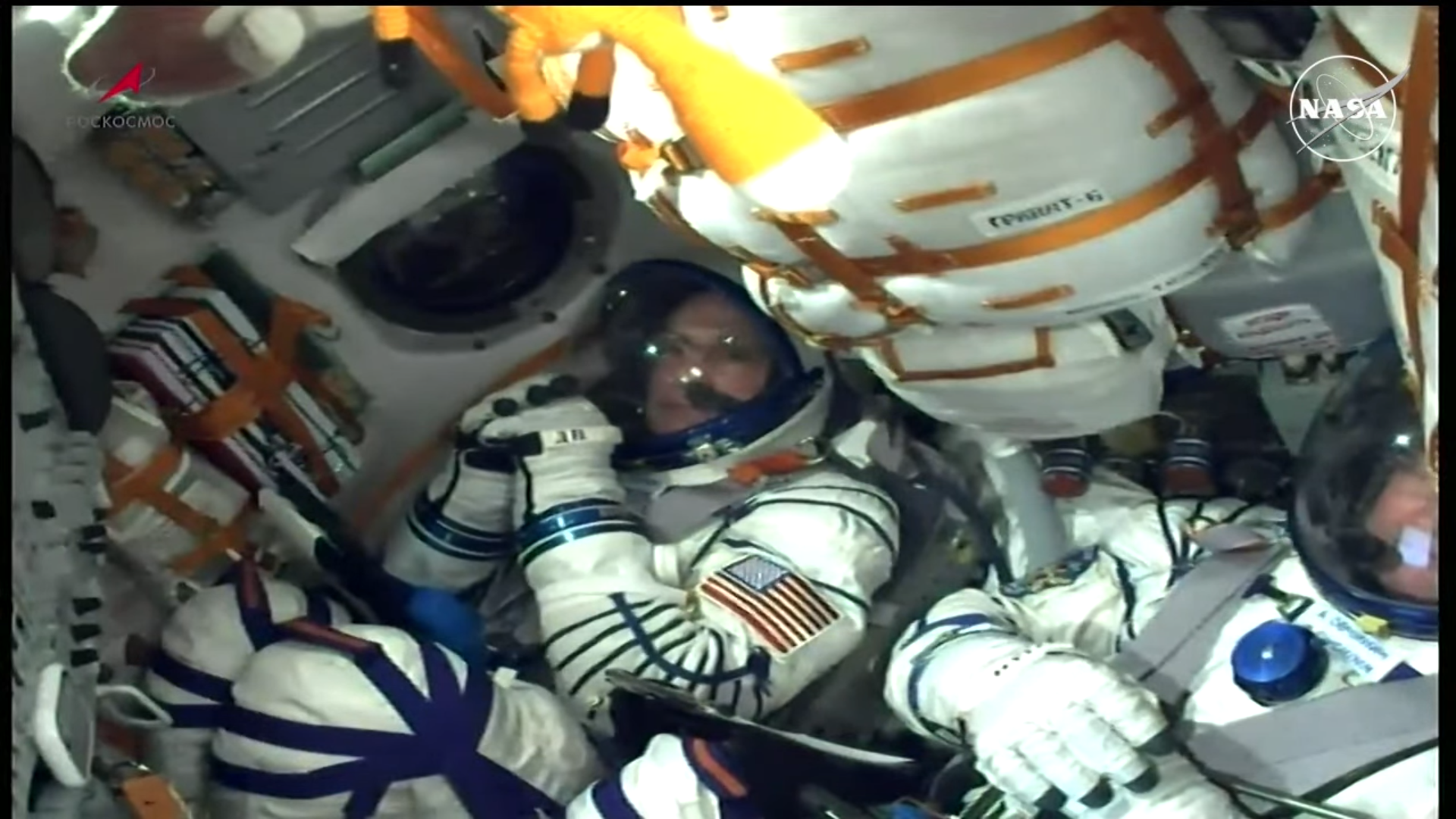Soyuz rocket launches new US-Russian crew of 3 to ISS (video)
Liftoff occurred at 12:23 p.m. ET today (Sept. 11).
A NASA astronaut and two Russian cosmonauts launched toward the International Space Station today (Sept. 11).
NASA astronaut Don Pettit joined Roscosmos cosmonauts Alexey Ovchinin and Ivan Vagner on the Russian Soyuz spacecraft, which lifted off atop a Soyuz rocket from Baikonur Cosmodrome in Kazakhstan today at 12:23 p.m. EDT (1623 GMT; 9:23 p.m. local Baikonur time). The trio will join the Expedition 71 crew for a half-year mission aboard the ISS.
The flight went flawlessly, according to NASA's launch commentator Anna Schneider at Johnson Space Center in Houston. "All three stages operated as expected during an eight-minute and 45-second ride to place Soyuz in its preliminary orbit," Schneider stated as NASA's coverage came to a close. With the successful orbital insertion, there are now a record 19 people in orbit across four different spacecraft. (20 people have been in space before at one time, but six of them were in suborbital space.)

The Soyuz MS-26 capsule is scheduled to dock at the International Space Station (ISS) at 3:33 p.m. EDT (1933 GMT) today. Docking coverage begins at 2:30 p.m. EDT (1830 GMT).
The hatch between Soyuz and the ISS will open at 5:50 p.m. EDT (2150 GMT) with NASA's coverage and opening remarks beginning at 5:30 p.m. EDT (2230 GMT). Both events will stream live here at Space.com, via NASA+ (formerly NASA Television).

Each crewmember on this flight has flown to space before. This is Pettit's fourth launch and will add to his accumulated total of 370 days in space, according to NASA statistics. His first mission, Expedition 6, was expected to last 2.5 months in space after a launch Nov. 23, 2002 on space shuttle Endeavour's STS-113 mission.

The landing was delayed to May 3, 2003, however, after the shuttle fleet was grounded in the wake of the space shuttle Columbia disaster that took place on Feb. 1, 2003, killing seven astronauts. Pettit's arrival on Earth aboard the Soyuz TMA-1 spacecraft was safe, but eventful: a malfunction caused the spacecraft to land 295 miles (475 kilometers) off target, causing a lengthy delay for ground teams to reach the crew.
Get the Space.com Newsletter
Breaking space news, the latest updates on rocket launches, skywatching events and more!
Related: 3 spaceflyers arrive at the ISS aboard Russian Soyuz spacecraft

Pettit also flew to space on the shuttle mission STS-126 in November 2008, and (aboard Soyuz TMA-03M) with ISS Expeditions 30 and 31 from Dec. 21, 2011 to July 1, 2012.
Ovchinin's launches have all been aboard Soyuz. His previous missions include ISS Expeditions 47 and 48 in 2016, the Soyuz MS-10 spacecraft launch on Oct. 11, 2018 that aborted safely after a rocket problem, and Expeditions 59 and 60 in 2019 — a successful retry for Ovchinin following that abort.
Vagner's previous launch was aboard Soyuz, for Expeditions 62 and 63, in 2020.
Join our Space Forums to keep talking space on the latest missions, night sky and more! And if you have a news tip, correction or comment, let us know at: community@space.com.

Elizabeth Howell (she/her), Ph.D., was a staff writer in the spaceflight channel between 2022 and 2024 specializing in Canadian space news. She was contributing writer for Space.com for 10 years from 2012 to 2024. Elizabeth's reporting includes multiple exclusives with the White House, leading world coverage about a lost-and-found space tomato on the International Space Station, witnessing five human spaceflight launches on two continents, flying parabolic, working inside a spacesuit, and participating in a simulated Mars mission. Her latest book, "Why Am I Taller?" (ECW Press, 2022) is co-written with astronaut Dave Williams.









